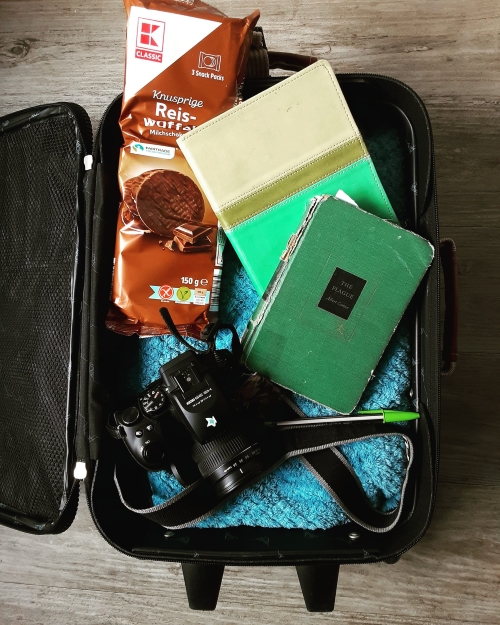Loving Students through Transition
Transitions are a regular part of life for everyone: changing classes at the end of each year, moving houses, or having a pet die. However, they are more regular and significant for children who are living cross-culturally (or in their own culture but with people from other cultures). The sheer number of changes can be overwhelming, and some children have difficulty responding to them. It is important to make sure children do not think that change and transition are always negative; many transitions can be extremely positive.

Many of us live in transient communities where students and staff come and go each year. It is vital that we equip students (whether staying or leaving) to move forward in the most positive way into the next stage of their lives and that we give students space to process, grieve, and celebrate. Transition and change affect everyone differently, and we must not assume that anyone will respond in a particular way just because we think they should. Whether you teach in a school where Christian values and teachings are a key pillar or whether you are in an environment where you must be careful in discussing the Bible, you can still lovingly guide students through this time and point them back to Christ. As much as possible, remind them that although things are always changing, Jesus ALWAYS remains the same.
Transitions lessons don’t have to be limited to a week in the school year. They can be integrated throughout the year. Below are tips for creating a framework for addressing transition and ideas for transition activities.[1]
Tips for a Transition Framework:
- As a member of staff, develop a rationale and plan for transition instruction.
- Create a safe space for students (e.g., circle times, class discussions, journal entries). Play trust games for the class to become comfortable with each other.
- Intentionally meet students where they are and acknowledge their difficulty and grief. Remind them that Jesus invites us to sit with Him in the difficult times of life. He also brings good out of those times, though in the midst that is hard to see.
- Do not just focus on those leaving – those staying are also greatly affected.
- Bridge gaps. Rather than sudden endings and abrupt beginnings, provide overlap between the old and the new. Help students balance loss of the old with anticipation of the new.
- Use emotions charts to give words to feelings and emotions students experience regarding transition. Take feelings seriously; discuss them with students.
- Be attuned to changes in behaviour. For children who have suffered any type of loss, transitions can make them more vulnerable. An anxious state of mind may lead to defensive behaviours: aggression, acting out, withdrawal, lack of academic progress, depression, etc. Compassionately acknowledge the loss, then lovingly address the behaviour.
- Involve parents and caregivers in any transition work the school undertakes.
- Focus on developing life skills, including emotional resilience, empathy, and the ability to ask for help.

Activity Ideas
- Feelings Box: Have students write down their feelings about a transition on a card (anonymously), then put it into a box. Discuss cards with the class, who can offer suggestions of how to cope. Reference Bible verses. Extension: Have students write a letter of advice in response to a card.
- Board Game: Have students create a game of Life with transitions, loss, change, choices, and possible ways to cope.
- Table of Transition: Have students write down what has already happened and what lies ahead, then list positive and negative impacts of that change.
- Writing & Art: Have students create an A-Z memory book, a picture, poem, diary entry, short story, or song about a past or future transition.
- Timeline: Have students draw a timeline of key events/experiences from the past year with a face showing their emotion for each entry. Have them discuss their timeline with a friend, explaining why they felt the way they did at each stage.
- Letter writing: Have students write a letter to their parents, another family member, or a friend describing how they feel about what is ahead, explaining what they are looking forward to and what they are anxious about.
- Coping Mechanisms: Discuss positive and negative strategies, emphasizing that everyone will respond differently. Make sure when possible to include prayer and knowing what the Bible says about different situations.
- Stories: Read books where someone has gone through transition. Identify feelings, responses, coping mechanisms, etc. (Examples: The Invisible String, It Will Be Okay, In My Heart, B at Home: Emma Moves Again)
- Bible Stories: Discuss Bible characters who went through a similar transition. (Examples: Joseph & Abraham had to leave home and live cross-culturally; Mary & Martha faced the loss of their brother.)

Transitions are messy. They are sticky. They are hard. They are a huge part of cross-cultural life. They also bring sweetness. Cling to Jesus as you guide your students through such times. Your life and the way you walk through transitions with your students will teach them as much as your classroom lessons will.
Lindsey Estes
Teacher, Bingham Academy
Ethiopia
[1] See the following resources for further ideas and tips:
Families in Global Transition (https://www.figt.org/page-1114038)
SPAN Schools – great for international schools (https://www.spanschools.org/)
Kaleidoscope – An Online Community for Third Culture Kids (https://www.kldscp.org/).
Photo Credits:
Packing a carry-on. Black Forest Academy, 2020.
Traveling. Black Forest Academy, 2020.
Processing Transition. Black Forest Academy, 2020.
Story Time. Arbor Christian Academy, 2018.Tags:Transformational Education, Transformational Perspectives, Transformative Teachers
Share this entry
You might also like
OnPractice: Bearing with the Failings of the WeakPractical Ideas for Navigating a Global Pandemic without Losing FaithTransform-ed: Modeling “Willingness”Abiding in the VineA Different Kind of EngagementTransform-ed: Caring for Needs



